Eliminating Interference From Potassium Monopersulfate Compounds In Chlorine Testing
Clean water.
Minimal closed-pool time.
Pool operators who use potassium monopersulfate (MPS), a chlorine-free product, have been delighted for both these reasons.
MPS oxidizes organic contaminants and maximizes sanitizer efficiency without raising the water's chlorine level.
Incorrectly referred to as “non-chlorine shock” (it is actually a non-chlorine “oxidizer”), although shocking with MPS has been a welcomed innovation, testing pool/spa water that contains MPS with a standard DPD chlorine test has not been as satisfactory.
MPS oxidizes the DPD #3 reagent (used to measure total chlorine) but not the DPD #1 and #2 reagents (used to measure free chlorine).
The endpoint of the test is a dark red, which falsely indicates the treatment has increased the chloramine level, when in reality it is the residual MPS that is being read.
To achieve accurate readings for combined chlorine, the MPS interference had to be eliminated without hindering the test's ability to distinguish between free and total chlorine.
For that reason, a "monox" test was developed for use with DPD kits that measures free and total chlorine accurately and permits calculation of the true chloramine and MPS levels.
By adding a single reagent, the
R-0867 Deox Reagent, to Taylor's DPD-based chlorine test kits, pool operators who shock with MPS need no longer be concerned about inaccurate sanitizer readings.
The Monopersulfate Interference Remover kit can be purchased as an upgrade to any of Taylor's DPD-based chlorine tests in two sizes: K‑2041 (.75 oz) and K‑2042 (2 oz).
It’s also available as a stand-alone kit, the K‑1518 FAS-DPD chlorine/monopersulfate test.
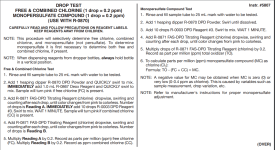
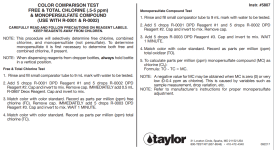
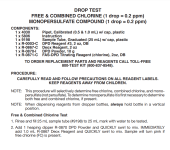
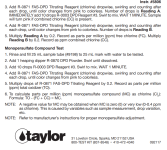
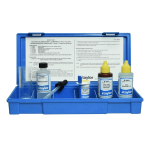 K-1518
K-1518
Drop Test, Chlorine (free/combined)/Monopersulfate, FAS-DPD, 1 drop = 0.2 ppm






